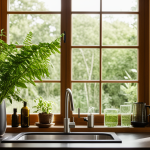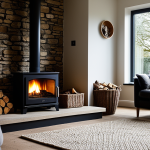Traditional Bubble and Squeak: Step-by-Step Preparation
For the traditional British bubble and squeak, start by gathering your key ingredients: leftover potatoes, cabbage, and other vegetables like carrots or Brussels sprouts—these form the base of the dish. Using cooled, cooked vegetables from previous meals enhances flavor and creates the ideal texture for your bubble and squeak recipe.
Begin by chopping the cabbage and other vegetables into bite-sized pieces, then mash the potatoes lightly without making them too smooth. Combine everything in a bowl, seasoning with salt and pepper to taste. This mix should hold together but not be overly dense, so adjusting the potato-to-vegetable ratio is crucial in your step-by-step guide.
Have you seen this : What are the steps to creating a savory toad in the hole?
Next, shape the mixture into patties or place it as a loose heap directly into a hot, lightly oiled frying pan. Cooking over medium heat is best to develop a golden, crispy crust—this contrast between crunchy exterior and soft interior defines traditional British bubble and squeak. Cook each side until browned, then flip carefully to avoid breaking the patties. Proper preparation and pan-frying ensure an authentic and satisfying meal with this classic recipe.
Traditional Bubble and Squeak: Step-by-Step Preparation
Crafting a traditional British bubble and squeak starts with gathering the right ingredients: mainly leftover potatoes and cabbage, plus any other vegetables you have on hand, such as carrots or Brussels sprouts. The key here is to use cooked, cooled vegetables, which help the mixture bind better and achieve the desired texture.
This might interest you : What are the essential ingredients for a flawless Welsh rarebit?
Begin by roughly chopping the potatoes and cabbage into similar-sized pieces. This promotes even cooking and a consistent bite. Combine these in a bowl, and gently mash or press them together, but avoid turning it into a puree—some texture should remain. Seasoning with salt and pepper at this stage ensures that flavors meld before cooking.
Once combined, shape the mixture into flat, round cakes that are about one inch thick. This form is ideal for pan-frying, allowing each side to brown evenly and develop the characteristic crispy exterior of bubble and squeak. Use a moderate heat and a generous amount of cooking fat—traditionally butter or a splash of oil—to prevent sticking and enhance flavor.
Following this step-by-step guide guarantees a classic bubble and squeak with crispy edges and a soft, fluffy interior.
Traditional Bubble and Squeak: Step-by-Step Preparation
Start your bubble and squeak recipe by assembling the essential ingredients: leftover potatoes, cabbage, and any extra vegetables like carrots or Brussels sprouts. These ingredients should be cold and previously cooked, which helps the mixture bind and develop the right texture during cooking.
Begin by finely chopping all vegetables to similar sizes. This ensures even cooking and a balanced bite throughout the dish. For the potatoes, lightly mash them to create a base that holds the vegetables together but retains some chunkiness. Next, combine the vegetables in a bowl, seasoning with salt and freshly ground pepper to enhance flavor in this traditional British bubble and squeak.
Once mixed, shape the mixture into patties roughly one inch thick or form a loose heap for pan-frying. Use a moderate heat with butter or oil in a non-stick or cast iron frying pan for the best results. The goal is to achieve a crisp, golden-brown crust that contrasts with the soft interior—a hallmark of a well-executed bubble and squeak recipe. Flip carefully to keep the shape intact and cook evenly on both sides, following this step-by-step guide for optimal texture and flavor.
Essential Ingredients for Classic Bubble and Squeak
Selecting the right bubble and squeak ingredients is key to an authentic dish. Typically, traditional bubble and squeak uses leftover potatoes and cabbage as its foundation, with additions like Brussels sprouts and carrots enriching both taste and texture. These vegetables provide the characteristic heartiness and earthiness expected.
Using cooled, leftover vegetables is vital. Freshly cooked vegetables contain too much moisture, which can prevent the mixture from binding and achieving the desired crispiness. Leftover potatoes, slightly dry and cooled, mash easily yet hold structure, balancing the softer textures of the greens.
Seasoning is straightforward but important. Salt and pepper are foundational, but many cooks add a pinch of nutmeg or mustard powder to accentuate flavor subtly. For cooking fats, traditionalists often opt for beef dripping or butter to enhance richness. However, vegetable oil or margarine works well for those preferring lighter or vegetarian options.
In summary, choosing the correct bubble and squeak ingredients—rooted in leftover potatoes, cabbage, and complementary vegetables—combined thoughtfully with seasoning and the right fat, lays the groundwork for a successful and tasty traditional bubble and squeak preparation.
Traditional Bubble and Squeak: Step-by-Step Preparation
To master the traditional British bubble and squeak, begin by collecting your bubble and squeak recipe essentials: leftover potatoes, cabbage, and additional vegetables such as carrots or Brussels sprouts. These form the foundation of the dish, and using cold, cooked vegetables is key to ensuring the mixture binds well during cooking.
Prepare by chopping all vegetables evenly, aiming for uniform piece sizes. This promotes even cooking, essential for the classic texture of bubble and squeak. Lightly mash the potatoes to create a base that holds the vegetables together without becoming paste-like, preserving some texture.
Combine the chopped vegetables and mashed potatoes in a bowl. Season generously with salt and pepper to enhance the natural flavors. Then, shape the mixture either into patties about an inch thick or leave it as a loose heap, depending on your preference.
For optimal texture, pan-fry the mixture in a lightly oiled or buttered skillet over medium heat. The goal is a golden, crispy crust enveloping a soft, fluffy center—this contrast defines the traditional British bubble and squeak. Flip carefully to maintain shape and cook evenly on both sides, following this step-by-step guide ensures consistency and a satisfying finish every time.
Traditional Bubble and Squeak: Step-by-Step Preparation
Start your bubble and squeak recipe by assembling the essential ingredients: leftover potatoes, cabbage, and other vegetables like Brussels sprouts or carrots, all cooled from previous meals. The key to success in this traditional British bubble and squeak lies in the preparation and handling of these ingredients.
Firstly, chop all vegetables into uniform, bite-sized pieces to ensure even cooking and texture. Lightly mash the potatoes so they act as a binding agent without turning into a puree. Combine everything gently, seasoning well with salt and pepper, as this boosts the overall flavor before cooking.
Next, shape the mixture into patties about one inch thick or rough heaps for pan-frying. Use a moderate heat with a generous amount of butter or oil in a heavy-bottomed pan, preferably cast iron, for optimal heat retention. The goal is to achieve a crispy, golden crust while keeping the interior soft and fluffy—a hallmark of the traditional British bubble and squeak.
Flip carefully once the bottom is browned to maintain shape, following this simple step-by-step guide to create an irresistible, classic dish.
Traditional Bubble and Squeak: Step-by-Step Preparation
Begin your bubble and squeak recipe by assembling key ingredients: chiefly leftover potatoes and cabbage, complemented by additional vegetables like carrots or Brussels sprouts. These should be cold, previously cooked vegetables, as this aids binding and creates the ideal texture.
Chop all vegetables into evenly sized pieces to ensure uniform cooking. Lightly mash the potatoes to produce a base that holds the mixture together without losing all texture. Combining these elements carefully balances softness and bite in the final dish.
Once mixed and seasoned with salt and pepper, shape the mixture into patties approximately one inch thick or leave it as a loose heap, depending on preference. For pan-frying, use a non-stick or cast iron pan with butter or oil over moderate heat. This method develops the signature crispy, golden crust contrasting the soft interior — a defining feature of traditional British bubble and squeak.
Flipping the patties with care preserves their shape and ensures even cooking. Following this step-by-step guide guarantees a satisfying texture and authentic flavor that honors the heritage of this classic British comfort dish.









